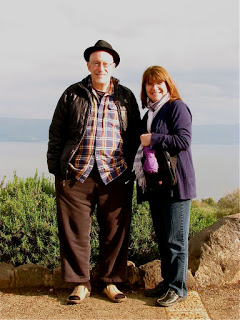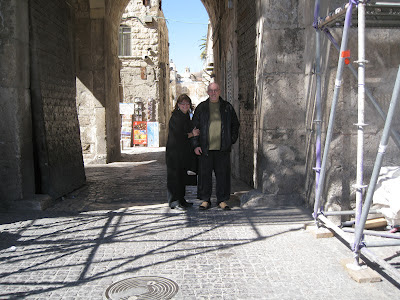Just want to wish you all a good Easter. Perhaps you’re thinking, what’s wrong with you, Shinzen? First of all, Easter was last week and, secondly, what does Easter mean to a good Jewish Buddhist like you?
Let’s address the last question first.
Once when I was translating for Sasaki Roshi, a Catholic priest asked him what his understanding of Christianity was. Sasaki said that it was all about crucifixion and resurrection—and hence, for him, identical to what Buddhism is all about, which is also crucifixion and resurrection.
Of course, by crucifixion and resurrection Sasaki meant the alternating cycle of self dissolving into expansion and contraction and then self re-arising as wisdom thought and loving emotion: Wisdom thought, because that resurrected self can look back and realize it had just been one with the Source, and loving emotion because that resurrected self sees all other selves as sharing that same Source.
Crucifixion is really an excellent metaphor for how the self dissolves according to Sasaki’s paradigm. We die into the Source by being simultaneously stretched out by expansion and nailed down by contraction.
Last month when I and my VSI administrator Chôshin were in Israel, we walked the Stations of the Cross together, ending in the Church of the Holy Sepulchre where the crucifixion and resurrection occurred. Sharing that experience with her was certainly a high point. Because of Sasaki Roshi’s take on Christianity, this church is one of my favorite spots on the planet.
Again on the theme of Easter, I would also like to share with you one of my favorite poems. Some people call it “Good Friday” although it’s actually just a portion of a longer poem, East Coker, which itself is one of the “Four Quartets” by T.S. Eliot. It was published in the Easter 1940 edition of the New English Weekly as World War II was gaining momentum. It depicts the purifying action of the Holy Trinity upon the human soul, which, as many of you know, can sometimes be a bit uncomfortable. Apparently for Eliot, his bhanga was of the “Dark Night” or “Dukkhañana” type.
Anyway, here’s a link to Eliot himself (!) reading the poem:
http://www.youtube.com/watch?feature=player_embedded&v=o-9gcauuboc#!
Also here’s a link to my take on the “Dark Night” phenomena: http://shinzenyoung.blogspot.com/2011/11/dark-night.html
But you’re still wondering why I’m a week late. Well actually I’m not. People often forget that in addition to Protestantism and Roman Catholicism, there’s another major branch of Christianity: Eastern Orthodox. Historically, the Orthodox tradition has placed a huge emphasis on direct meditative experience. For this, it uses a rich Greek technical vocabulary. Central notions are hesychia (tranquility), theoria (clarity), apatheia (equanimity), askesis (systematic, sustained practice), nepsis (sober observation)—sound familiar? This year, Orthodox Easter begins today, Friday April 13th.
Finally here’s some pics of me and Chôshin in the Holy Land.
Me and Chôshin on the Mediterranean beach near Haifa
Me and Chôshin walking the Stations of the Cross


